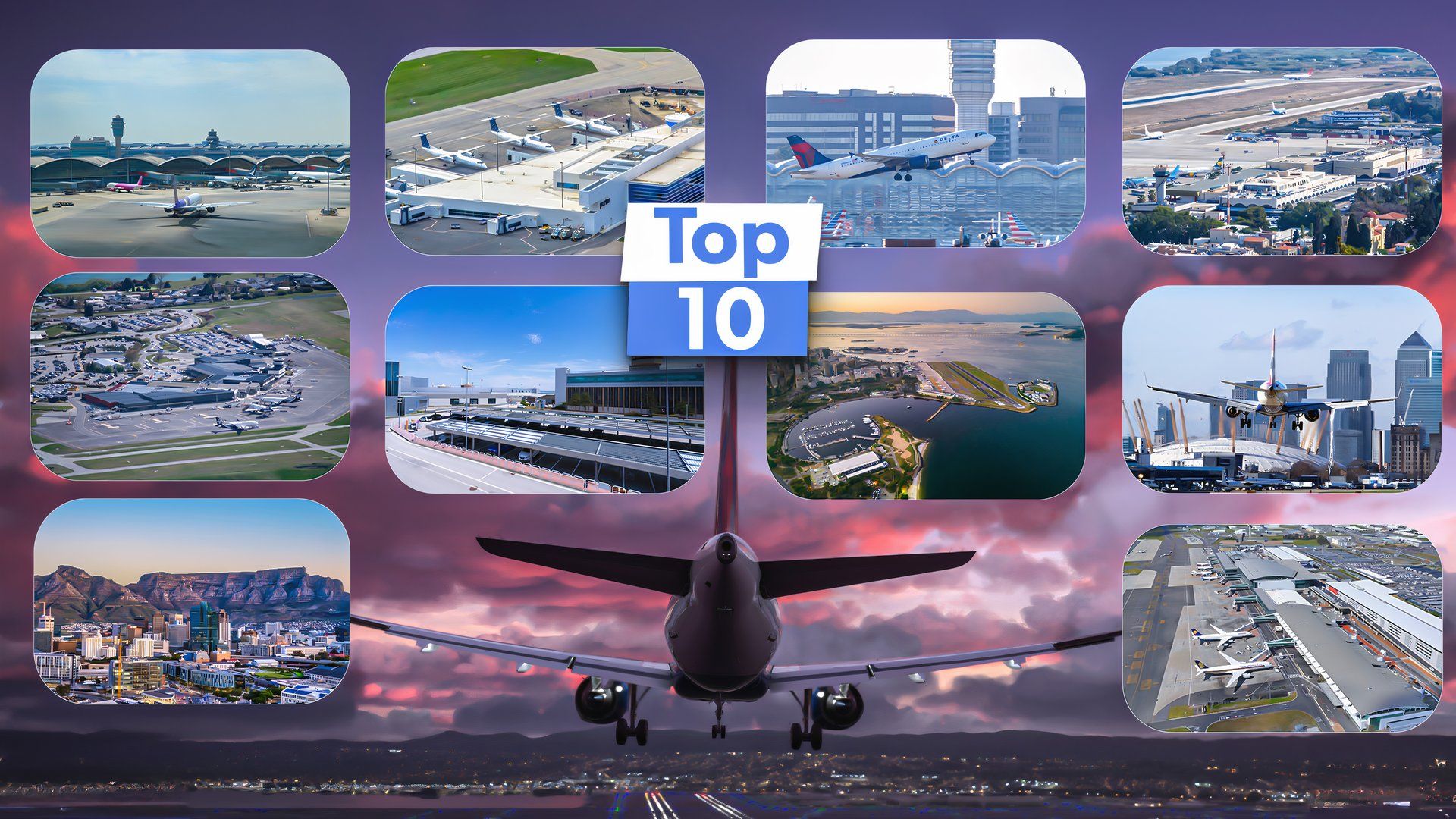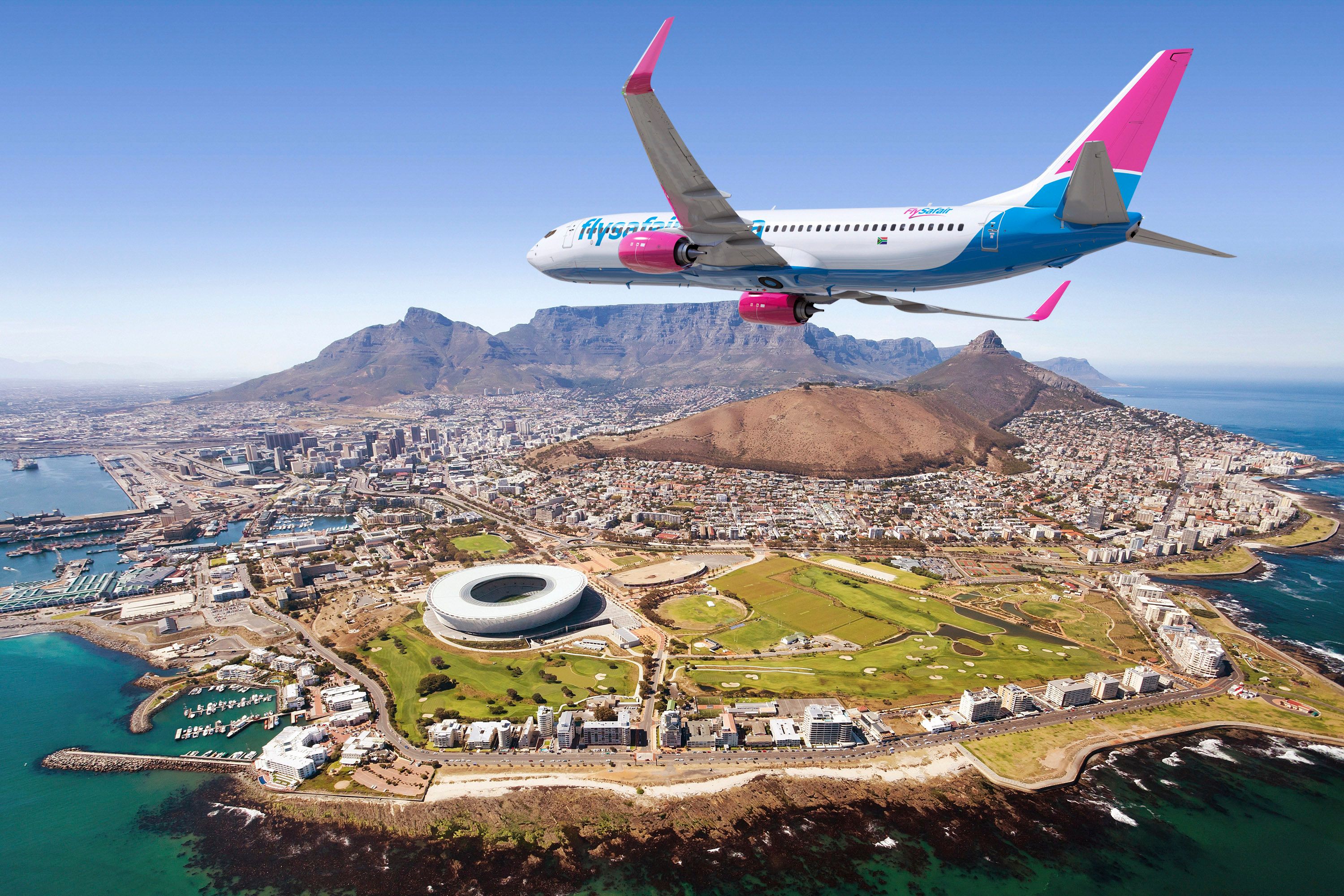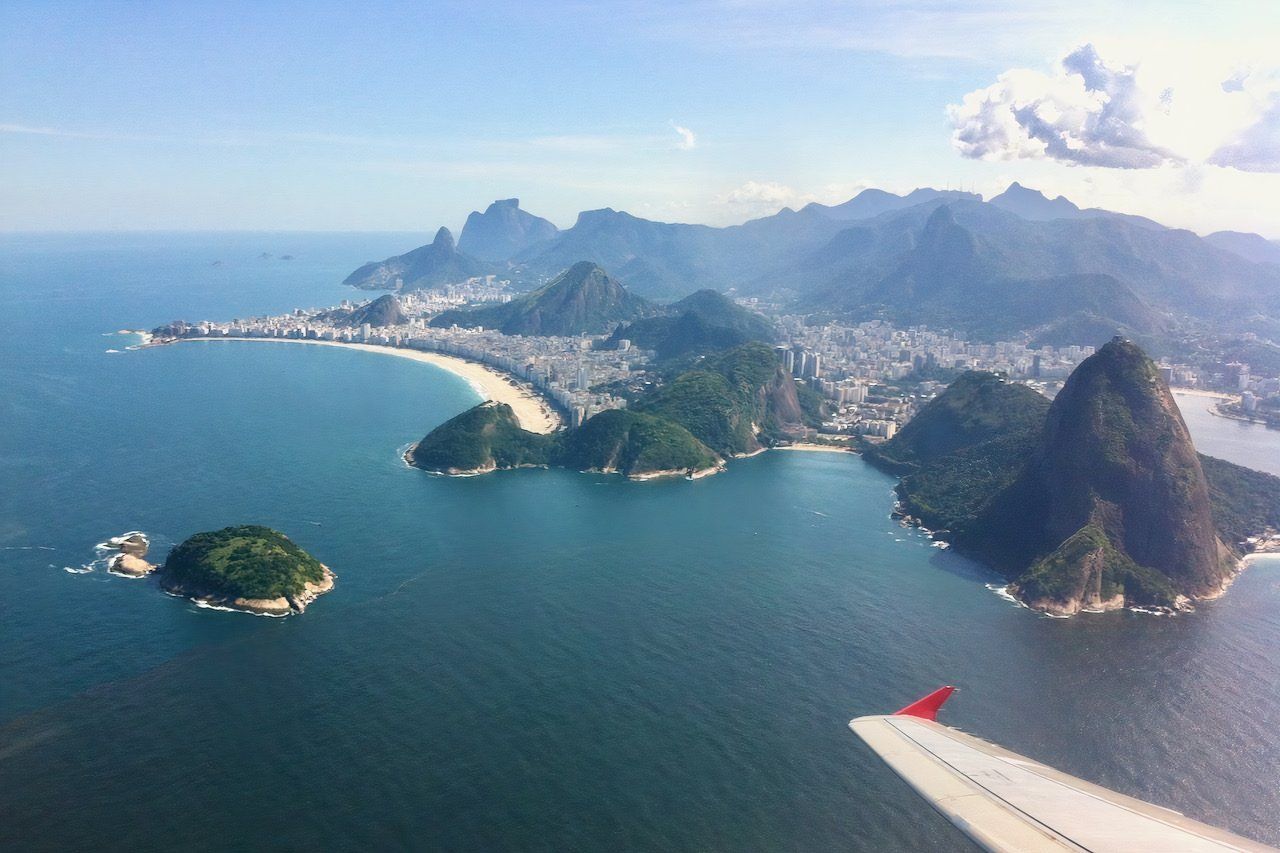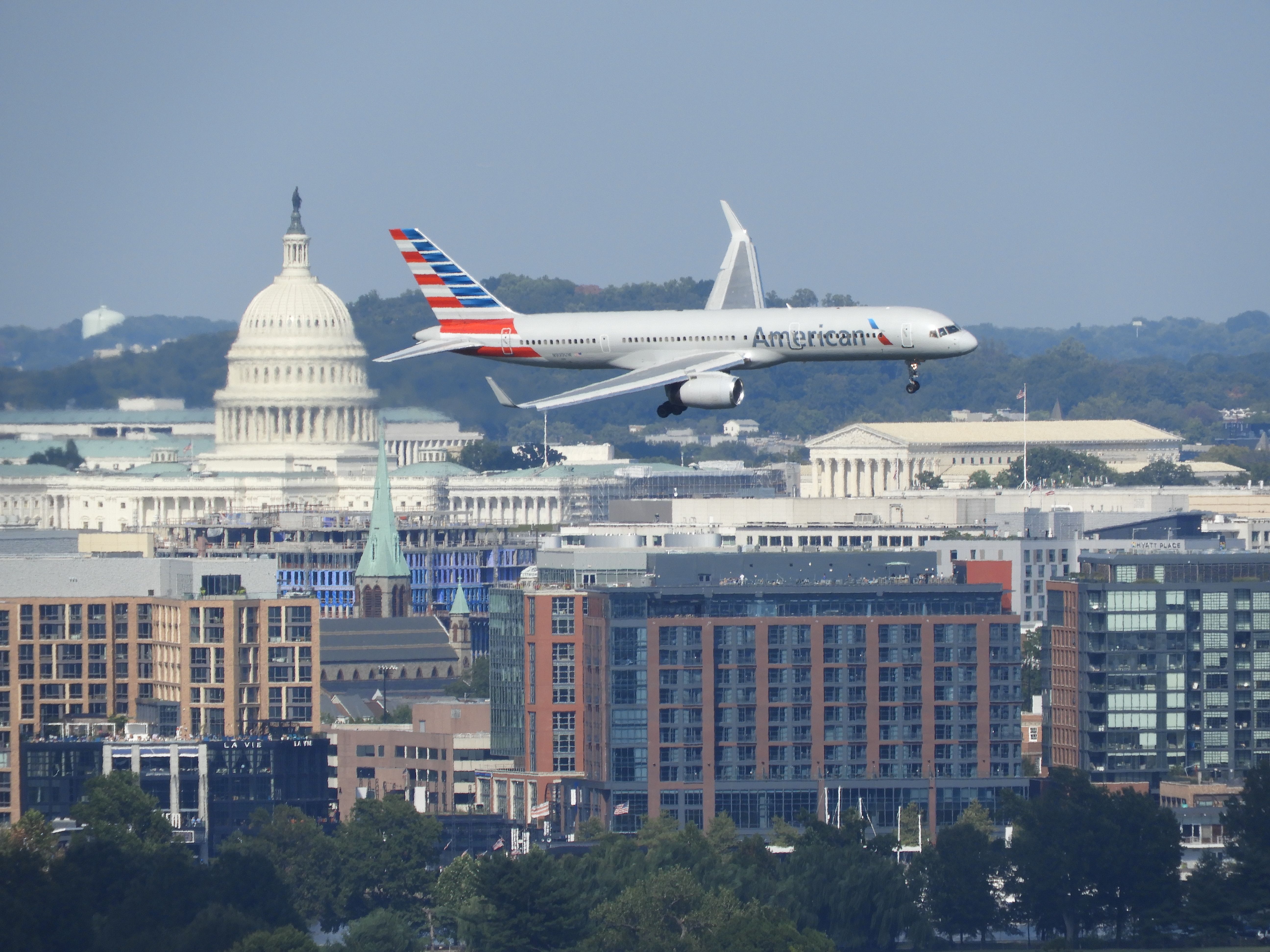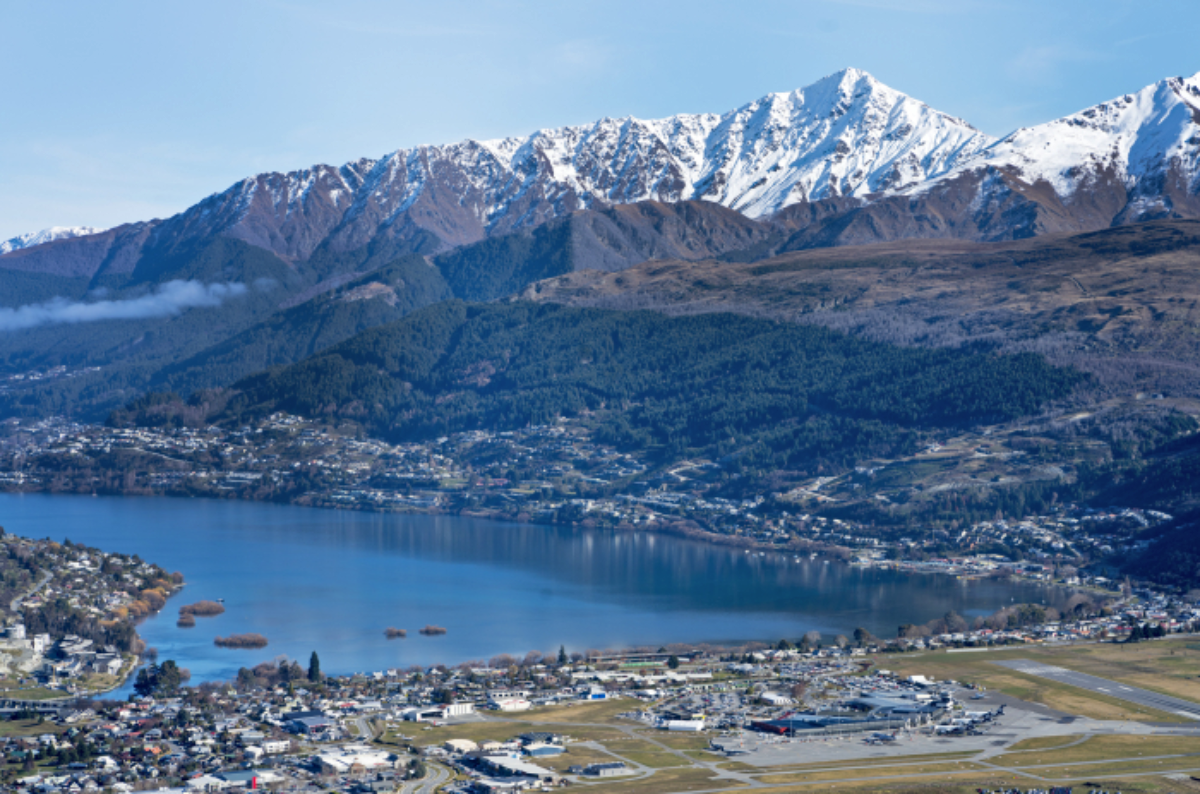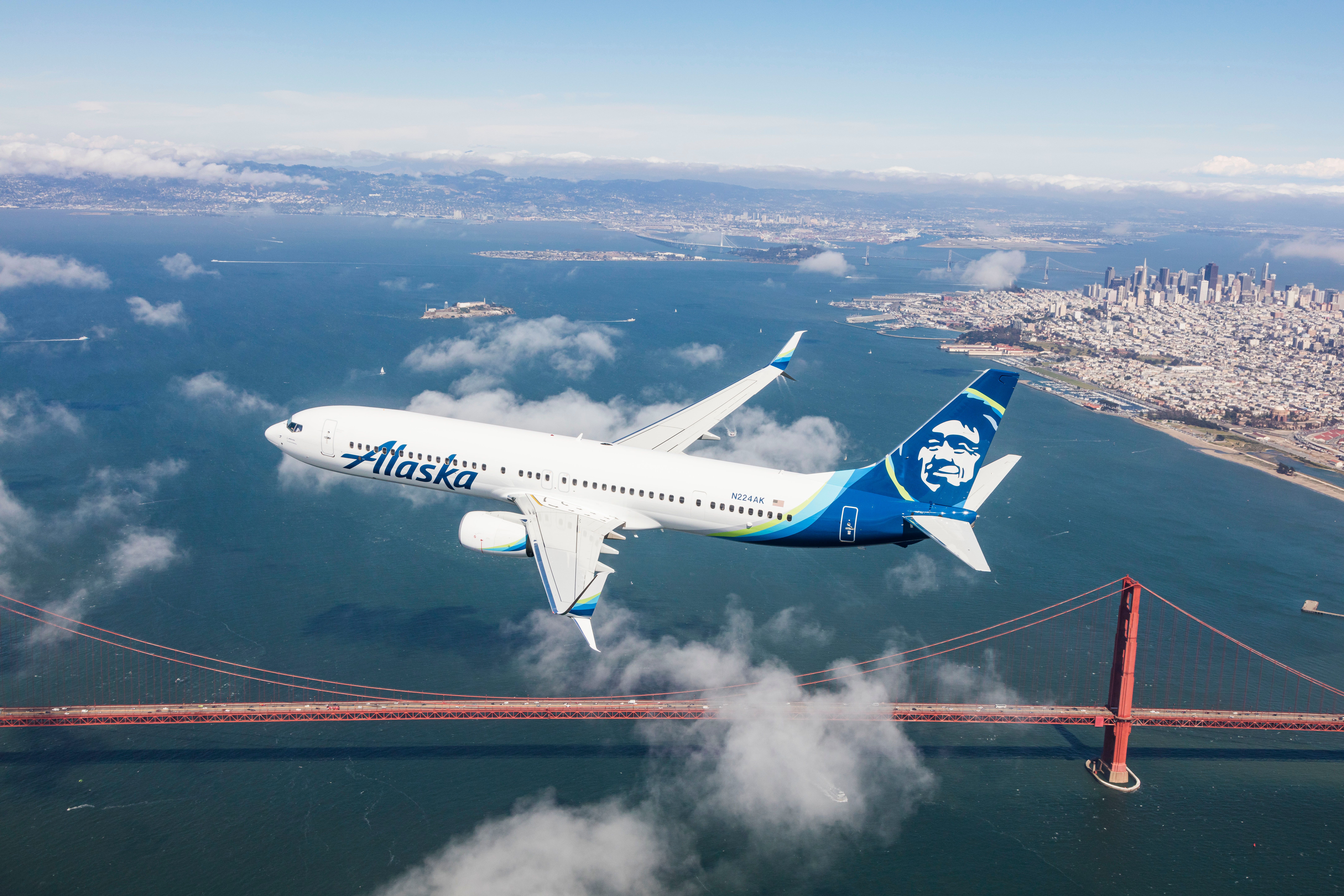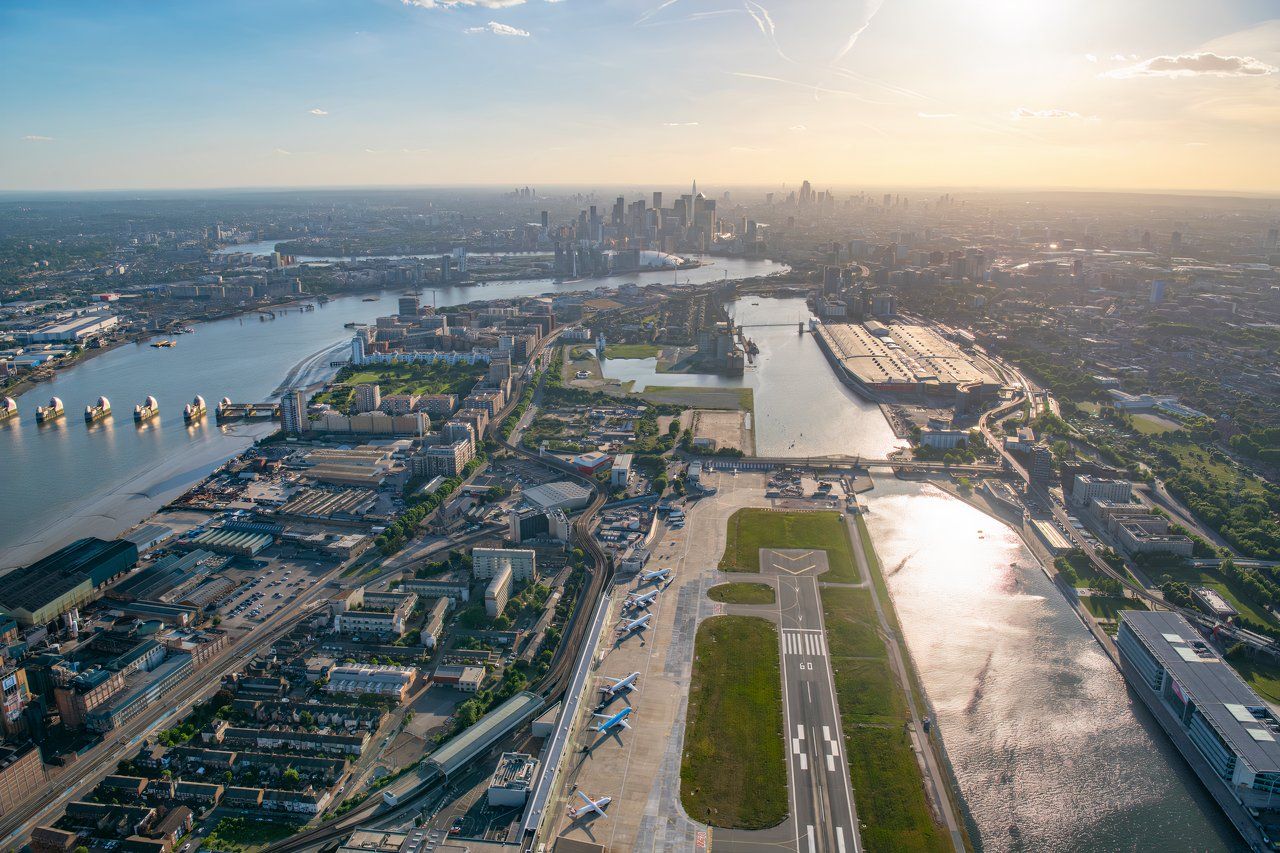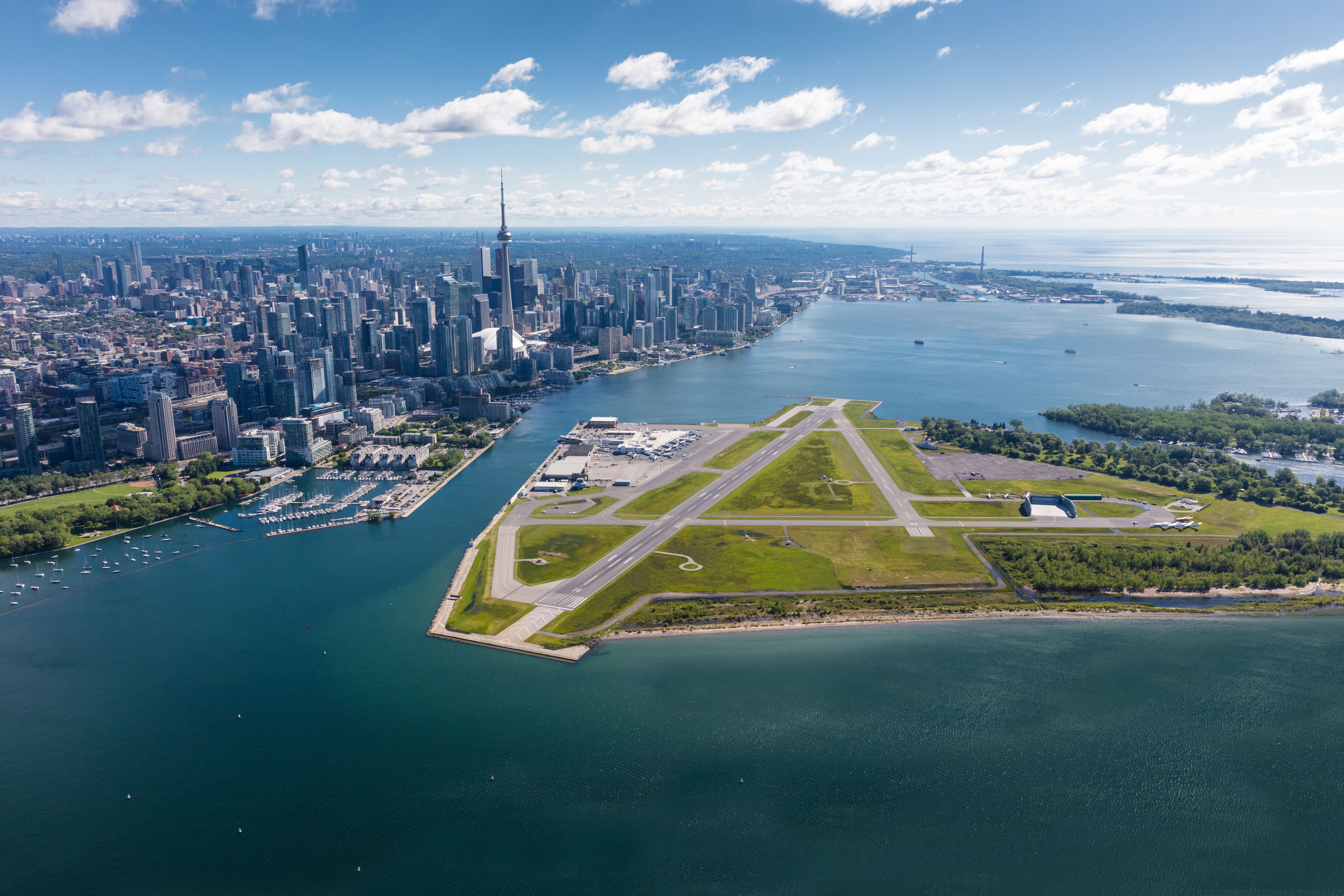Summary
- Cape Town is a top destination for spectacular landings, with stunning views over the Atlantic and Indian oceans, Table Mountain, and Robben Island.
- Rio’s Santos Dumont airport comes a close second, offering memorable landings with views of Copacabana Beach and Sugarloaf Mountain.
- Washington-Reagan combines unique approaches and great views over DC landmarks for an unforgettable landing.
We all have our least favorite airports, which we try to avoid at all costs because of the size, congestion, or chance of delays. Conversely, most of us also have our favorite airports. It might be purely because of the destination, or maybe it’s the airport amenities or above-average efficiency. But for a surprisingly large number of us, our favorite airports are dictated by their surroundings and, precisely, the views out the window as we fly into them.
With this in mind, we decided to put together a list of the Top 10 airports in the world based purely on how spectacular the landings are as you arrive. Of course, this is a fool’s errand because what makes for a stunning landing is very subjective. With thousands of airports and the list restricted to ten, our readers will undoubtedly feel strongly about airports that have been left out. If you do, we encourage you to share your thoughts in the comments below.
Note that the airports featured here were selected based on a few criteria:
- They are airports that unquestionably have spectacular views upon landing (almost always on take-off). These often involve unique aircraft maneuvers, enhancing the experience and views.
- The airports are relatively easy for most regular travelers to get to. Bora Bora, Barra, and Bhutan are also spectacular, but very few of us will ever get there.
- The airports are not chosen simply because they are “top airports.” Skytrax already does a valuable job of ranking the best airports each year.
1
Cape Town International
IATA code: CPT
Photo: FlySafair
Top of the list is Cape Town International Airport (CPT), situated just outside what is perhaps the most beautiful city in the world. This airport has spectacular takeoffs and landings in both directions, so there is no wrong place to sit. You’ll get to see the meeting of the Atlantic and Indian oceans, iconic natural landmarks, and beautiful beaches, mountains and vineyards.
Prevailing winds are from the southeast, so most landings are from the north. Sitting on the right of the aircraft will get you the best view of the flat-topped Table Mountain, the city of Cape Town itself, and Robben Island, where Nelson Mandela was imprisoned. For takeoff on international flights, expect to do a circuitous route out over False Bay (made famous by Shark Week), banking right and flying over the peninsula and up the beaches of the western coastline heading north, so a seat on the right-hand side is preferred as well.
|
Cape Town International: Key Statistics |
|
|---|---|
|
Runways |
01/19 (3,201 m / 10,502 ft) |
|
16/34 (1,701 m / 5,581 ft) |
|
|
Annual Passengers (2023) |
10,034,352 |
|
Annual Aircraft Movements (2023) |
99,138 |
|
Source: Airports Company South Africa |
|
2
Rio de Janeiro – Santos Dumont
IATA code: SDU
Photo: Rio Escape
If there is any city that can rival Cape Town for natural beauty, it is Rio. Your international flight to Rio will land at Galeão International Airport (GIG) just outside the city, with beautiful views on approach. But for the main event, a domestic flight to the city’s smaller Santos Dumont Airport (SDU) is unforgettable, so consider flying into São Paulo and connecting to a shuttle flight with LATAM, GOL, or Azul.
With a north-south runway on reclaimed land in the heart of Guanabara Bay, SDU has stunning views on arrival and departure. Shuttle flights from São Paulo either approach from the sea or overfly the city itself with sharp turns to line up for a northerly landing. Expect to see Copacabana Beach, close up views of Sugarloaf Mountain, and the Christ the Redeemer statue in the distance.
|
Rio de Janeiro – Santos Dumont: Key Statistics |
|
|---|---|
|
Runways |
02R/20L (1,323 m / 4,341 ft) |
|
02L/20R (1,260 m / 4,134 ft) |
|
|
Annual Passengers (2023) |
11,446,012 |
|
Annual Aircraft Movements (2023) |
120,888 |
|
Source: Infraero |
|
3
Washington DC – Reagan National Airport
IATA code: DCA
Photo: MichaelSchoenDC I Shutterstock
Washington DC has three airport options, but Washington-Reagan (DCA) has an extraordinary landing as it combines views of world-famous landmarks with a unique approach. With the restricted airspace of Prohibited Areas P-56A/B in DC, aircraft arriving from the north fly the “River Visual” approach to runway 19, literally flying the last 4 miles over the Potomac River before a sharp right bank immediately before landing.
Sit on the left of the aircraft for the best aerial views in town of all that DC has to offer – the US Capitol, Washington Monument, National Mall, White House, and the Lincoln Memorial. Prepare for a memorable landing as the pilot makes a final sharp turn 200 feet above the ground after crossing the George Mason Bridge to line up with the runway.
|
Washington DC – Reagan National Airport: Key Statistics |
|
|---|---|
|
Runways |
01/19 (2,094 m / 7,169 ft) |
|
04/22 (1,497 m / 5,000 ft) |
|
|
15/33 (1,586 m / 5,204 ft) |
|
|
Annual Passengers (2023) |
25,453,581 |
|
Annual Aircraft Movements (2023) |
310,280 |
|
Source: FAA |
|
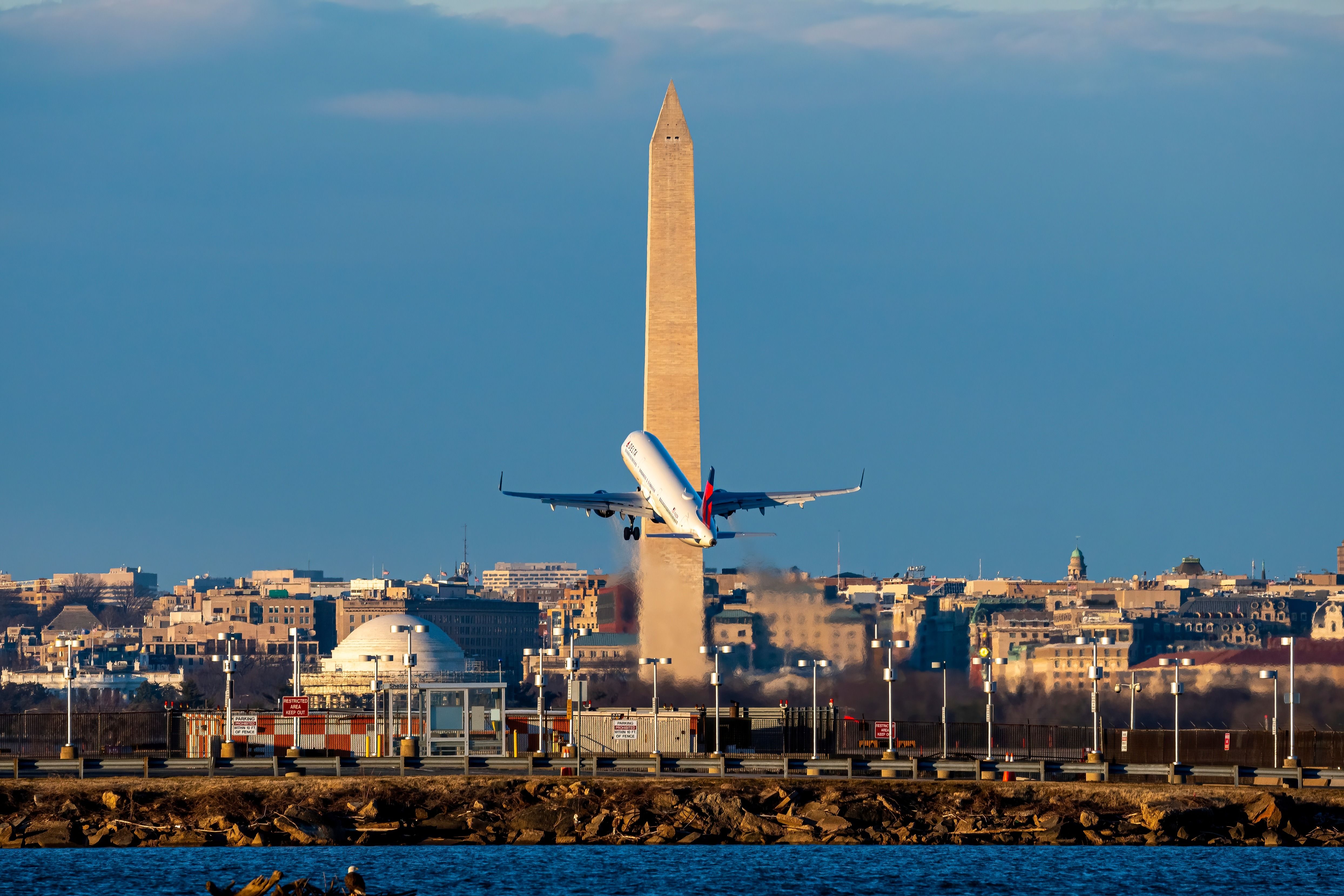
Related
The Unique Piloting Experience At Ronald Reagan Washington National Airport
The special airport in the heart of the US Capitol.
4
Venice Marco Polo Airport
IATA Code: VCE
There are so many spectacular landings in Mediterranean cities, and the likes of Nice, Genoa, or Gibraltar could easily have made this list. But Venice has stood alone for centuries as an iconic city of beauty (think how many times you have heard other cities referred to as “the Venice of…”) and is perhaps never more spectacular than from the air. As a result, Venice Marco Polo Airport (VCE) ranks fourth on our list.
The airport is north of the city on the mainland, so sit on the right for approaches from the southwest, and you will see the fish-shaped island of the old town take shape in the Adriatic beneath you. From the bell towers and canals winding between the centuries-old terracotta-roofed buildings to the gleaming cruise ships arriving and departing the port, there’s a lot to take in before landing on the edge of the north lagoon.
|
Venice Marco Polo Airport: Key Statistics |
|
|---|---|
|
Runways |
04L/22R (3,300 m / 10,827 ft) |
|
04R/22L (2,780 m / 9,121 ft) |
|
|
Annual Passengers (2022) |
9,319,156 |
|
Annual Aircraft Movements (2022) |
79,171 |
|
Source: Assaeroporti |
|
5
Queenstown Airport
IATA code: ZQN
Photo: Queenstown Airport Newsroom
Our list only includes airports that are “relatively easy for most regular travelers to get to,” so Queenstown International Airport (ZQN) in New Zealand is admittedly borderline. But if you visit New Zealand (and over 10 million people do each year), you want to see the south island. ZQN is unmissable for adventure and aviation enthusiasts if you’re going there.
Arriving at ZQN means descending between the rugged peaks of the snow-capped Southern Alps, then along the vineyard-lined Gibbston Valley. You will get awe-inspiring views of the jagged peaks of ‘The Remarkables’, a mountain range that towers some 6,000ft above the airport, and then traverse beautiful Lake Wakatipu immediately before touching down.
|
Queenstown Airport: Key Statistics |
|
|---|---|
|
Runways |
05/23 (1,777 m / 5,830 ft) |
|
14/32 (720 m / 2,362 ft) |
|
|
Annual Passengers (2022) |
1,460,034 |
|
Annual Aircraft Movements (2022) |
10,101 |
|
Source: Queenstown Airport |
|
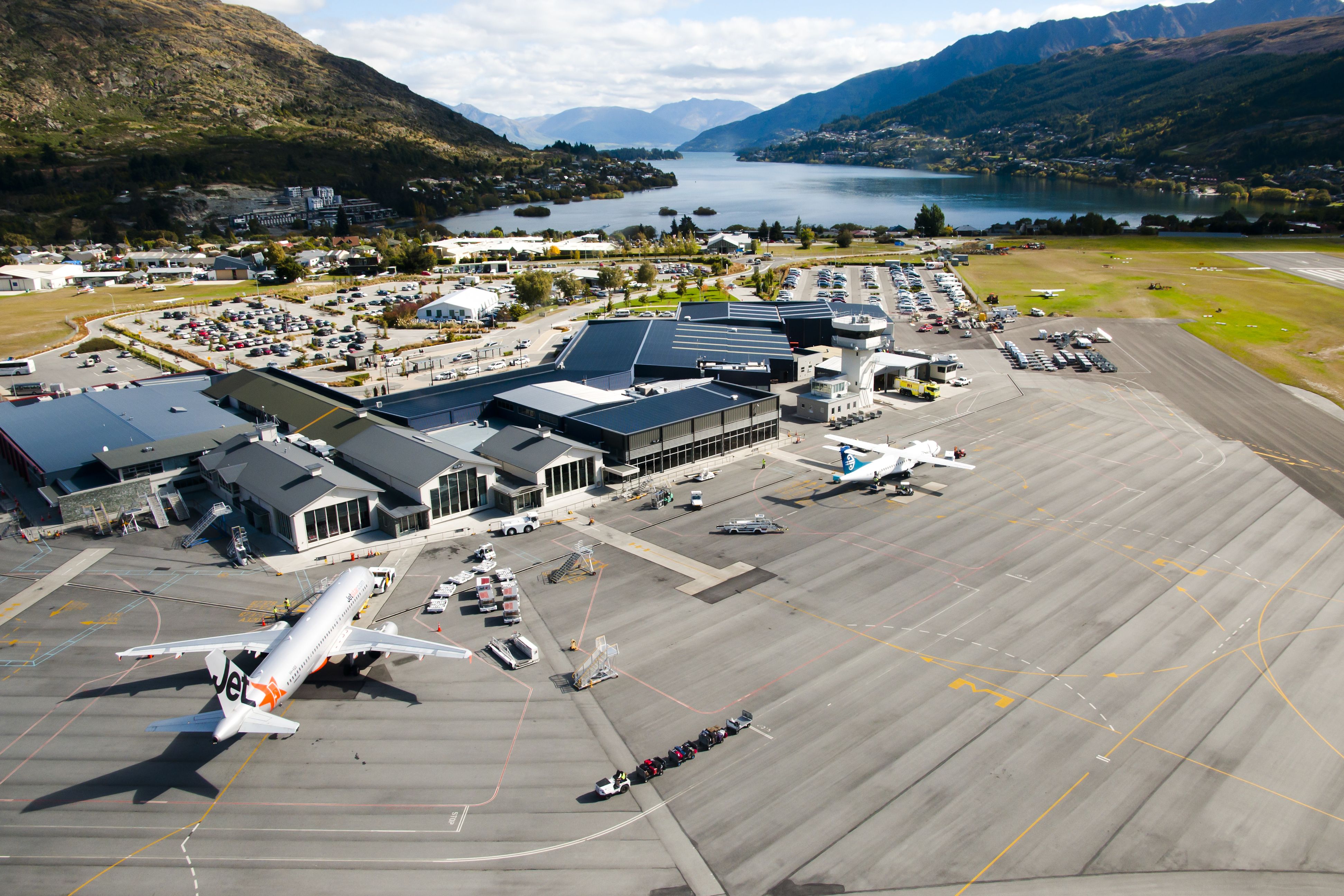
Related
Why Queenstown, New Zealand, Is Such A Challenging Airport To Fly Into
From its remarkable scenery to its challenging approach, we look at what it takes to land at Queenstown International Airport.
6
Rhodes Airport
IATA code: RHO
Greece has no shortage of spectacular airport arrivals – the low approach into Skiathos (JSI) is a favorite with plane spotters, and the hills and low turns over water into Corfu (CFU) are justifiably famous. But Rhodes (RHO) makes our list for its dramatic approach and superb views of the beautiful island, a must-see ancient city.
With most flights arriving from the north and landing to the west on the east-west runway, a seat on the right of the aircraft is preferable. You will be treated to beautiful views of the island’s northern beaches as you fly in over the Aegean, followed by dramatic views of one of the oldest walled cities in Europe, sitting at the crossroads with the Middle East and Africa. Then prepare for a sharp 180-degree turn over the water and look down at the fisherman in their small trawlers as you line up for the runway.
|
Rhodes Airport: Key Statistics |
|
|---|---|
|
Runways |
06/24 (3,305 m / 10,844 ft) |
|
Annual Passengers (2023) |
6,142,813 |
|
Annual Aircraft Movements (2023) |
43,077 |
|
Source: Rhodes Airport |
|
7
San Francisco International Airport
IATA code: SFO
Photo: Alaska Airlines
The Bay Area has three main airports, but San Francisco International (SFO) has the most visual appeal. Whether it is city views or the bay itself, with Alcatraz Island just offshore, or the iconic Golden Gate Bridge, both takeoffs and land takeoffs in all directions from its four runways always provide something interesting to see.
For landing, flights most commonly approach runway 28L from the south, so a seat on the left will give you views of Silicon Valley and on the right across to Oakland as you pass low over the water before touching down. If you are arriving from the north, sit on the right to get beautiful views of the Napa Valley vineyards before flying parallel to the Golden Gate Bridge at around 12,000 feet. For departure, sit on the right for longer haul flights departing on runway 28R or on the left for shorter flights departing on runway 1L, and you will get low-level views of San Francisco, the harbor, and the bridges.
|
San Francisco International Airport: Key Statistics |
|
|---|---|
|
Runways |
10L/28R (3,618 m / 11,870 ft) |
|
10R/28L (3,469 m / 11,381 ft) |
|
|
1R/19L (2,637 m / 8,650 ft) |
|
|
1L/19R (2,332 m / 7,650 ft) |
|
|
Annual Passengers (2023) |
50,196,094 |
|
Annual Aircraft Movements (2023) |
384,871 |
|
Source: FAA |
|
8
Hong Kong International Airport
IATA code: HKG
Up until it closed in 1998, the old Kai Tak airport would have been #1 on every list for its incredible landings. However, the current Hong Kong International Airport (HKG, also known as Chep Lak Kok) makes the list in its own right because of its spectacular views. Built west of Hong Kong on reclaimed land adjacent to Lantau Island, you will get excellent views of the South China Sea and its islands when visibility is good.
Flights most commonly land from the west, so if you are arriving from the east, a seat on the right is preferable as you will get great views of Hong Kong Harbor and Kowloon before turning on the final approach. Arriving from the west, a seat on the left can be advantageous for getting the best views as you loop around the bright lights of Macao before swooping in over the container ships, fishing boats, and junks with distant views (on a clear day) of Guangzhou and Shenzhen.
|
Hong Kong International Airport: Key Statistics |
|
|---|---|
|
Runways |
07R/25L (3,800 m / 12,467 ft) |
|
07C/25C (3,800 m / 12,467 ft) |
|
|
07L/25R (3,800 m / 12,467 ft) |
|
|
Annual Passengers (2023) |
39,501,000 |
|
Annual Aircraft Movements (2023) |
276,000 |
|
Source: HKIA |
|
9
London City
IATA code: LCY
Photo: London City Airport
Our pick could just as easily have been London Heathrow (LHR) because spotting the world-famous landmarks of London on the final approach into the city’s largest airport makes for a spectacular landing. But we picked London City (LCY) for this list because it has all that and more.
LCY has an advantage over LHR in that it is central, so you fly much lower and get a clearer view of the famous landmarks such as Big Ben, the London Eye, or Tower Bridge. However, LCY is equally crucial in making this a spectacular landing because it is renowned for the steep approaches that aircraft need to make to avoid surrounding infrastructure. With a glide angle of 5.5 degrees (nearly double the European norm) combined with the oft-inclement weather of the UK, a landing at LCY could be one of the most exciting of your lifetime.
|
London City Airport: Key Statistics |
|
|---|---|
|
Runways |
09/27 (1,508 m / 4,948 ft) |
|
Annual Passengers (2023) |
3,009,313 |
|
Annual Aircraft Movements (2023) |
44,731 |
|
Source: UK Civil Aviation Authority |
|
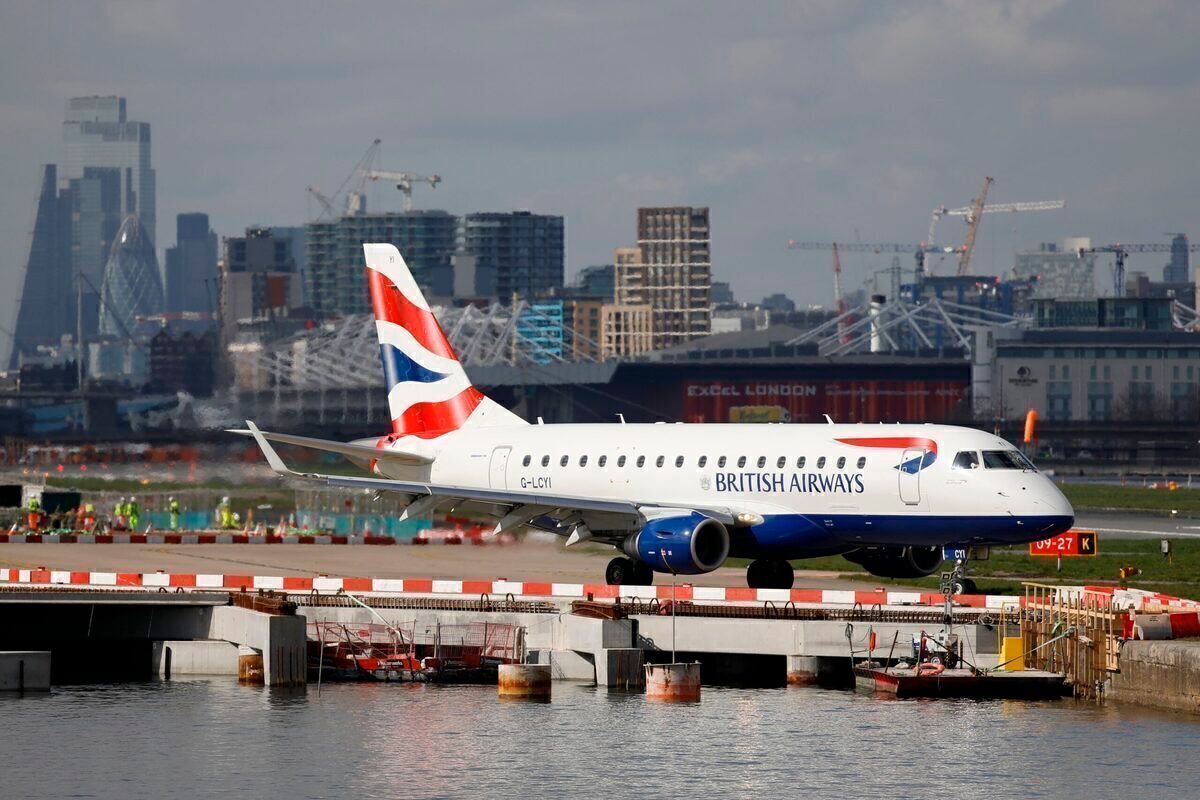
Related
The History Of London City Airport
10
Billy Bishop Toronto City Airport
IATA code: YTZ
Photo: Neiuport Aviation
Last up on the list is another “second airport”: Billy Bishop Toronto City Airport (YTZ). Located on an island just southwest of downtown Toronto, YTZ is served by Porter Airlines and Air Canada using De Haviland Canada Dash 8-400s because jet aircraft are not allowed at the airport.
YTZ provides a perfect mix of city and lake. On a fine day, you will see the boats and yachts gliding across Lake Ontario on either side of the aircraft. Approaches usually come from the west, so a seat on the left will give you a view of the shoreline and Humber Bay. As you near Toronto, you will see a close-up of the city skyline, crowned by the iconic 1,800-foot CN Tower.
|
Billy Bishop Toronto City Airport: Key Statistics |
|
|---|---|
|
Runways |
06/24 (750 m / 2,460 ft) |
|
08/26 (1,216 m / 3,988 ft) |
|
|
Annual Passengers (2023) |
1,732,000 |
|
Annual Aircraft Movements (2023) |
111,538 |
|
Source: Statistics Canada |
|

